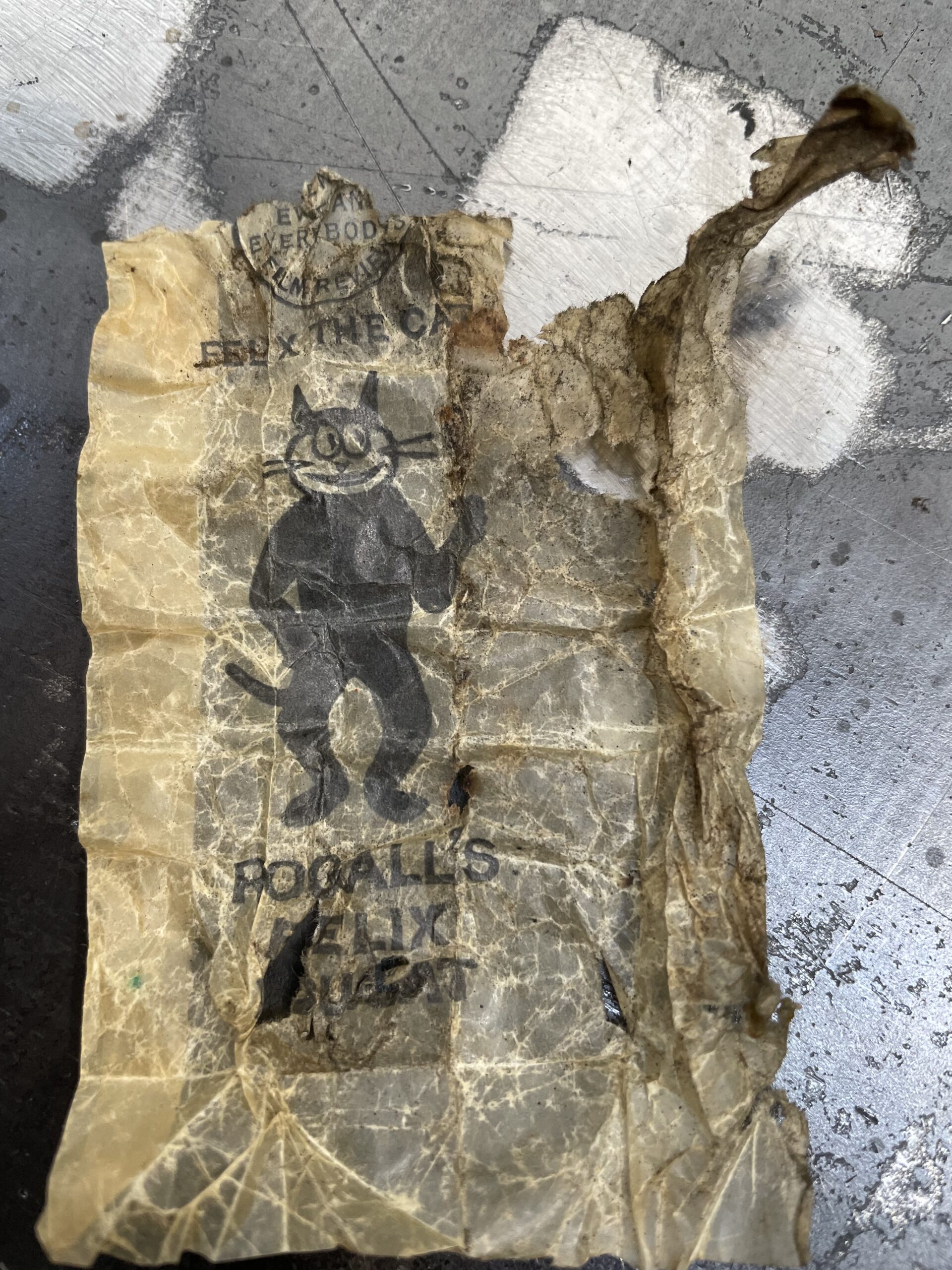Felix, the cat with nine lives, has emerged from the muzzle (flash-eliminator) of a German machine gun after being trapped there for over 100 years!
The furry feline had possibly been shoved into the weapon by a British Tommy during the battle of Passchendaele in 1917, and remained hidden ever since.
Not a real moggie of course. Felix The Cat was the name given to a popular brand of nougat manufactured by Leeds-based confectioners, Rogall’s, who had a factory in the Seacroft area to the east of the city. It was the waxed wrapping paper from the sweet that was rolled up and placed in the end of the gun barrel, only discovered when the weapon was being prepared for display at a military history festival this summer.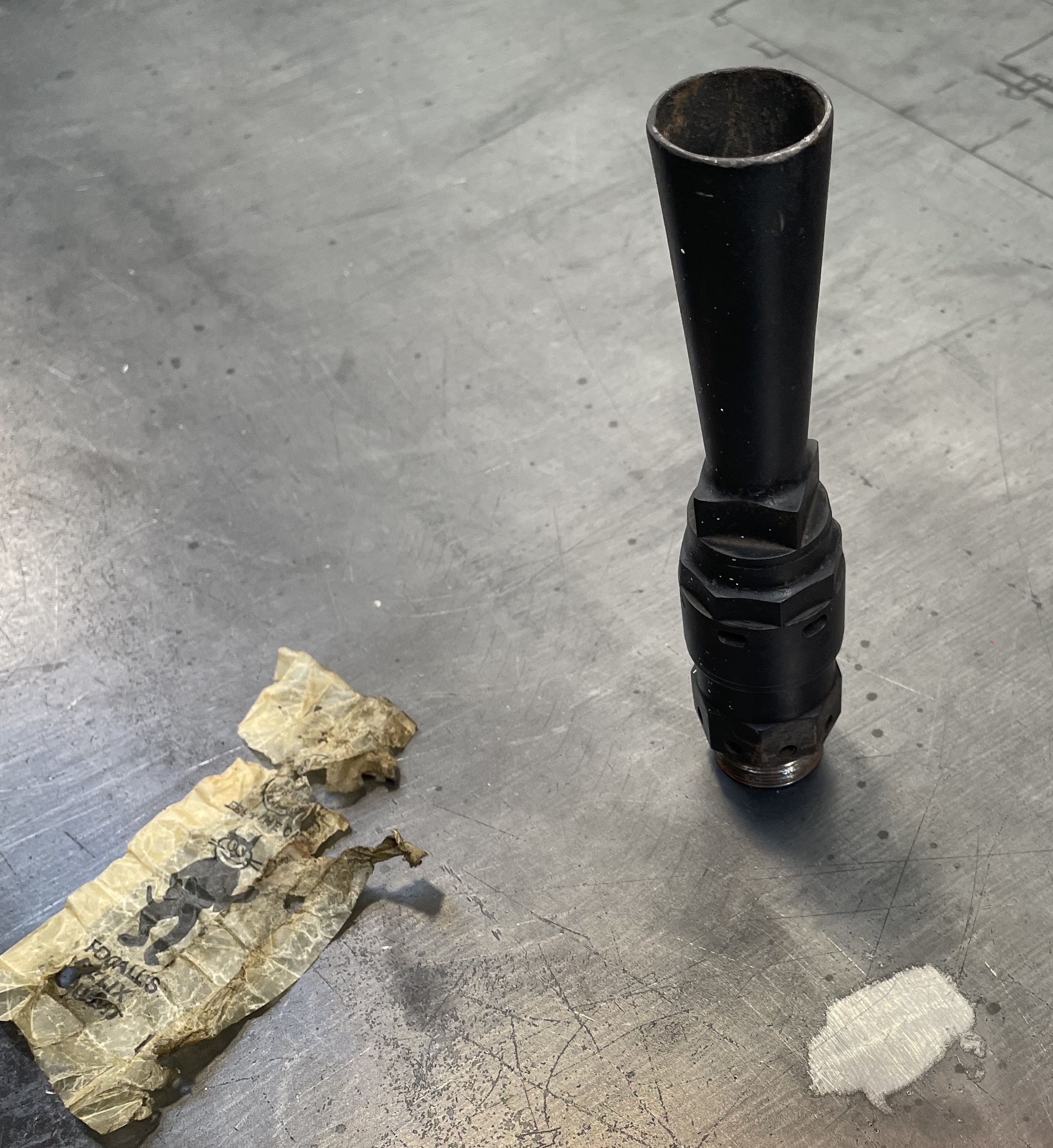
The Bucks Military Museum Trust has had the German MG08 Maxim machine gun in our collection for some time. The First World War-vintage weapon was a gift from the Royal Green Jackets Museum (now The Rifles) in Winchester in 2014 and has been in store ever since, awaiting an opportunity to be exhibited.
Having been invited to take part in a military history event this summer, we decided that this would be the perfect time to put the machine gun on show. However, the gun’s mount was missing, making it difficult to display it safely. To rectify this, we asked a local engineering company to fabricate a stand. And it was while dismantling the weapon to fit the new tripod that Felix came to light (see photographs).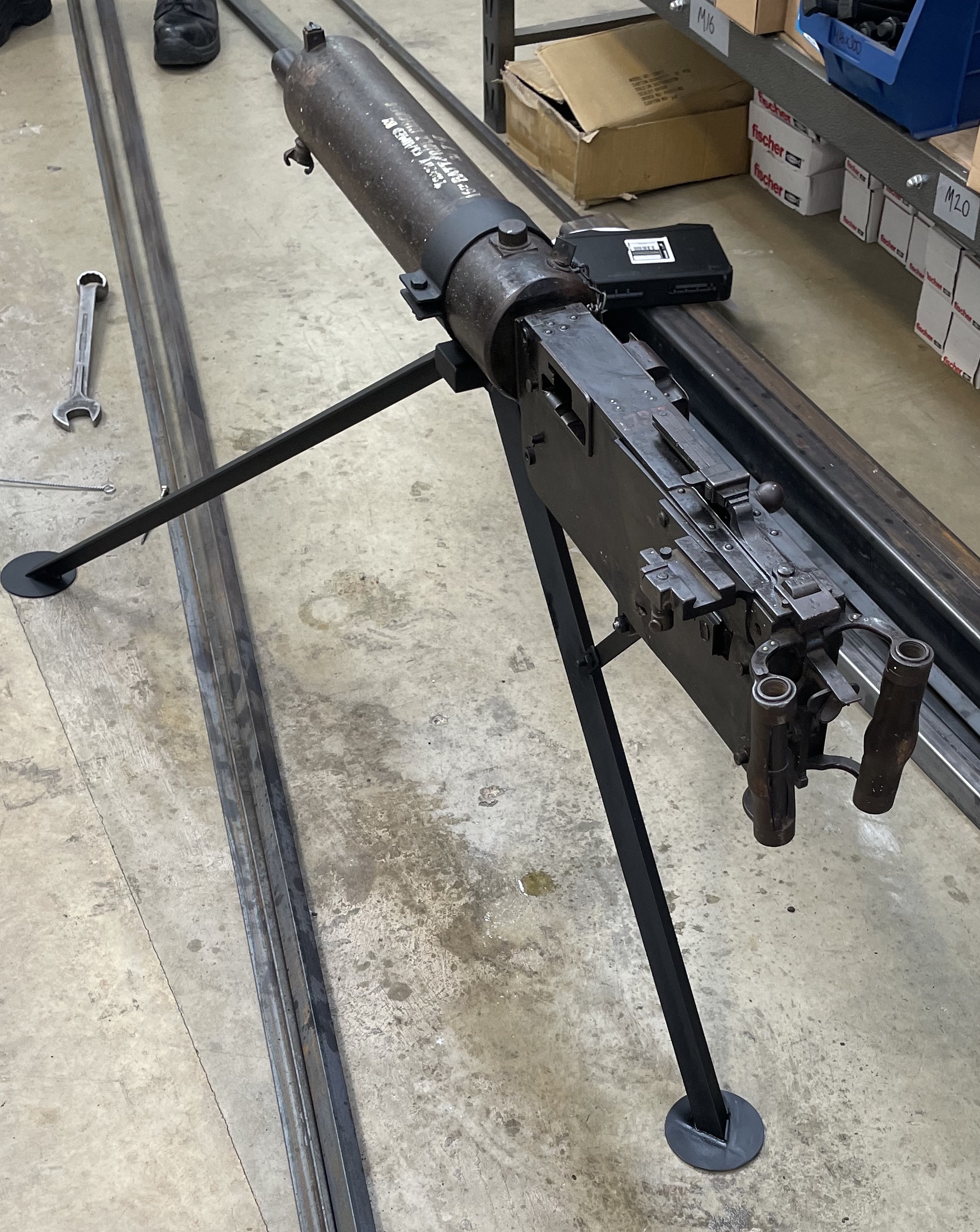
This particular MG08 was captured by troops of the 16th Battalion, the Rifle Brigade, a forerunner of the Royal Green Jackets. It still bears the scars of the fighting in which it was taken, with several bullet holes clearly visible. An inscription on the water-jacket of the gun reads: “Trophy claimed by 16th Rifle Brigade, 31 July 1917”. That date was, of course, the first day of the Battle of Passchendale, on which the battalion, part of 117th Brigade, 39th Division, XVIII Corps, took part in the 5th Army attack that would become known as the Battle of Pilkem Ridge.
The men of 16 RB were tasked to capture the German front and second line trench systems, in front of, in and behind Kitchener’s Wood, before securing crossings of the Steenbeek river, to the north of St Julien (see photograph). The battalion’s war diary contains a detailed account of the fighting, written by the Commanding Officer, Lt Col The Hon Edward Coke, MC, who was himself wounded in the assault (WO95/2586/1).
Zero was set for 0340, about 30 minutes before dawn, and was heralded by a heavy artillery bombardment on the German front line and beyond. At 0513 the battalion advanced to capture its first objective (the Black Line). Racecourse Farm offered serious opposition to the left company, where a machine gun in a concrete bunker inflicted numerous casualties until it was captured. This company then came under fire from a second machine gun at Bochcastel Estaminet, and this was silenced by rifle grenades and Lewis Gun fire. The leading waves advanced into Cannon and Canoe Trenches (Black Line) where they came under further heavy machine gun and sniper fire from Kitchener’s Wood. One machine gun in particular, apparently positioned near the ‘M’ in Bochcastel Estaminet (see map) gave a great deal of trouble until it was captured. Two officers, Lt Taylor and Lt Barrett, were among its victims.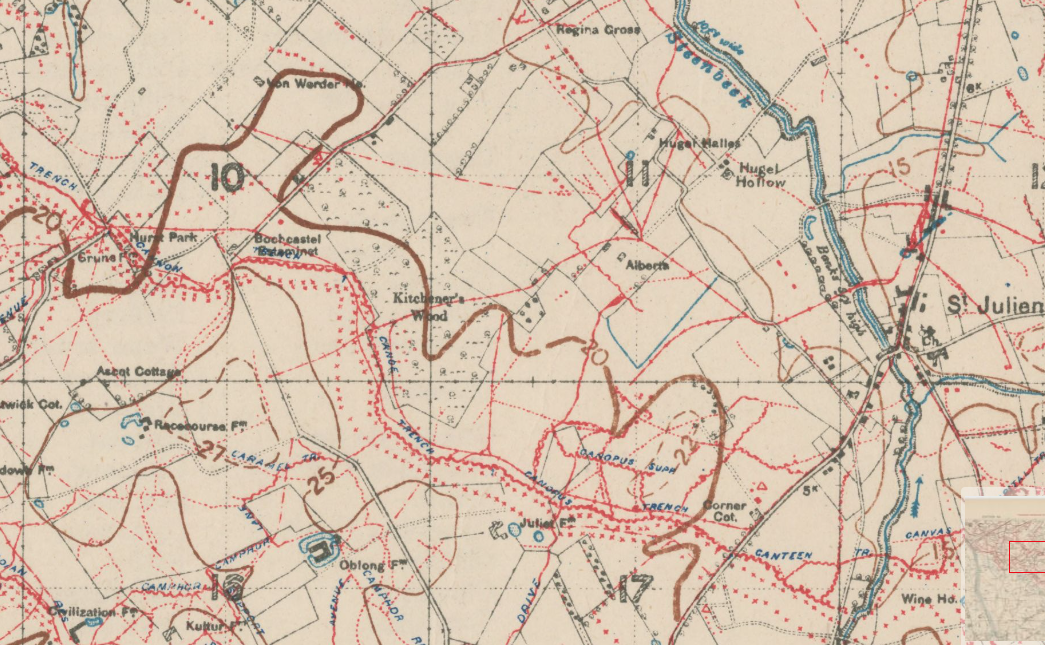
Meanwhile, the right company was fired on by two machine gun positions in Kitchener’s Wood. Both of these were captured, along with the guns and the wood was cleared before the troops advanced to the second objective (the black dotted line) where more machine guns and snipers were encountered. These groups were killed or captured and while the second objective was being consolidated, the attackers were fired on from further MGs at Regina Cross, a second position, south-west of the cross-roads, and from Alberta. The follow-on waves then passed through and headed for the Steenbeek. It was now Zero plus 1 hour 40 minutes. Regina Cross, which consisted of three strong points, offered further serious resistance on the left until platoons managed to outflank it, using Lewis Guns and Rifle Grenades, and No 27 bombs (phosphorus). About 30 Germans were killed or captured along with three further machine guns before the Steenbeek was reached and crossed. Over the six days in which the 16 RB were involved in this action their casualties were 32 killed (including two officers), 277 wounded and 18 missing. A total of seven machine guns were recovered by the battalion and taken back to the rear.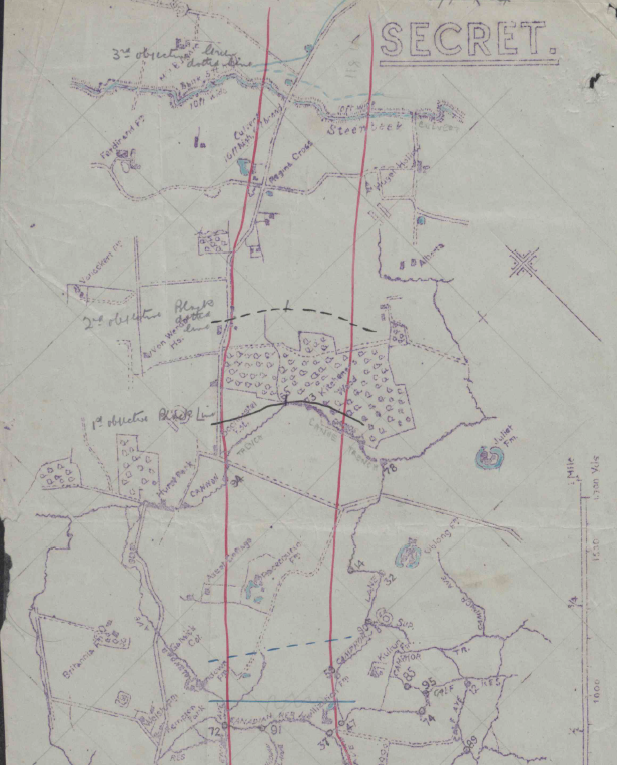
There is a direct, if tenuous Buckinghamshire link to this action. The Rifle Brigade was forced to withdraw back across the Steenbeek after a strong German counter-attack and established their line to the west of the watercourse. Two weeks later, on 16 August, the First Buckinghamshire Battalion would attack in the same area, successfully crossing the Steenbeek and securing a new line to the east.
The MG08, calibre 7.92x57mm, was the standard German heavy machine gun throughout the First World War. It was a beast, weighing in at 62.2kg (with water tank and fixed to its sled mount), but being belt-fed it had a cyclic rate of fire of 450-plus rounds per minute and an effective range of 2500 yards. A lighter version, the MG08/15, was developed during the war and could be carried and fired on the move. The MG08, although largely replaced by the lighter and more modern MG34 and MG42, was still in use by some German units in the Second World War. It was mainly used in fixed defensive positions, including along the Atlantic Wall, and was certainly encountered by allied troops in Normandy during and after the D Day landings.